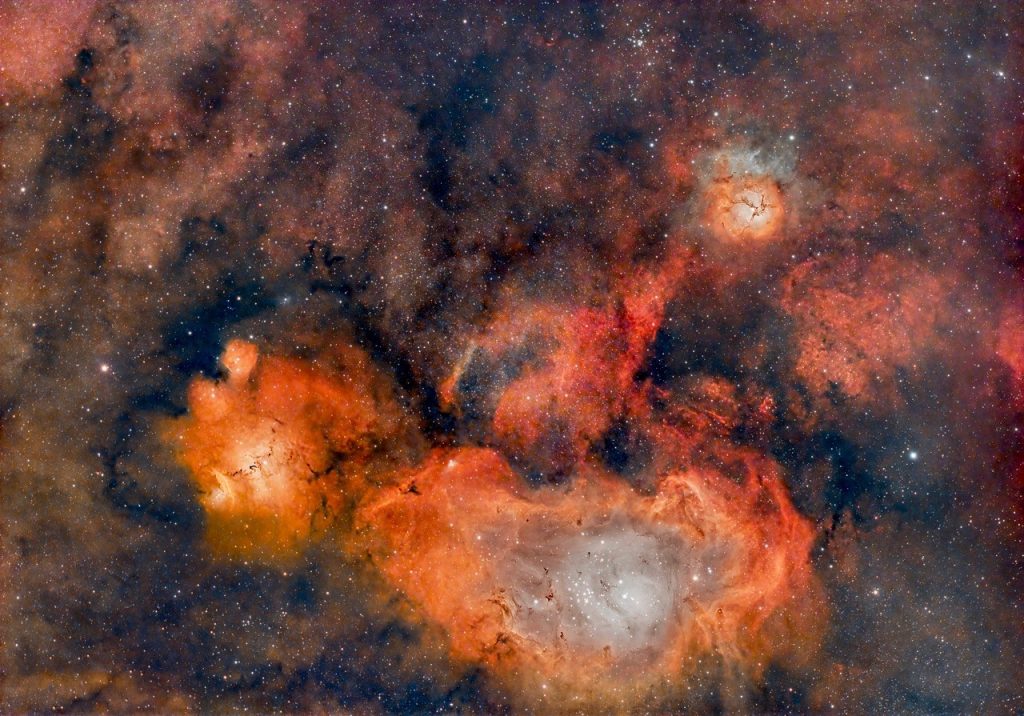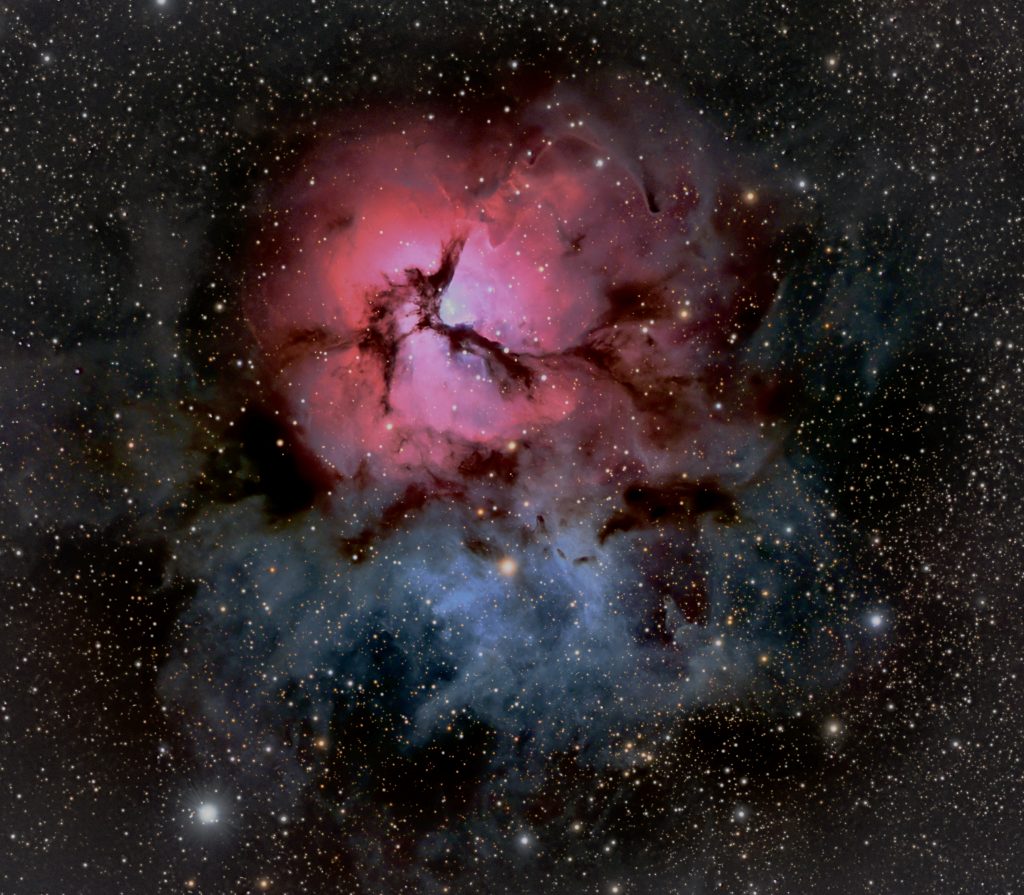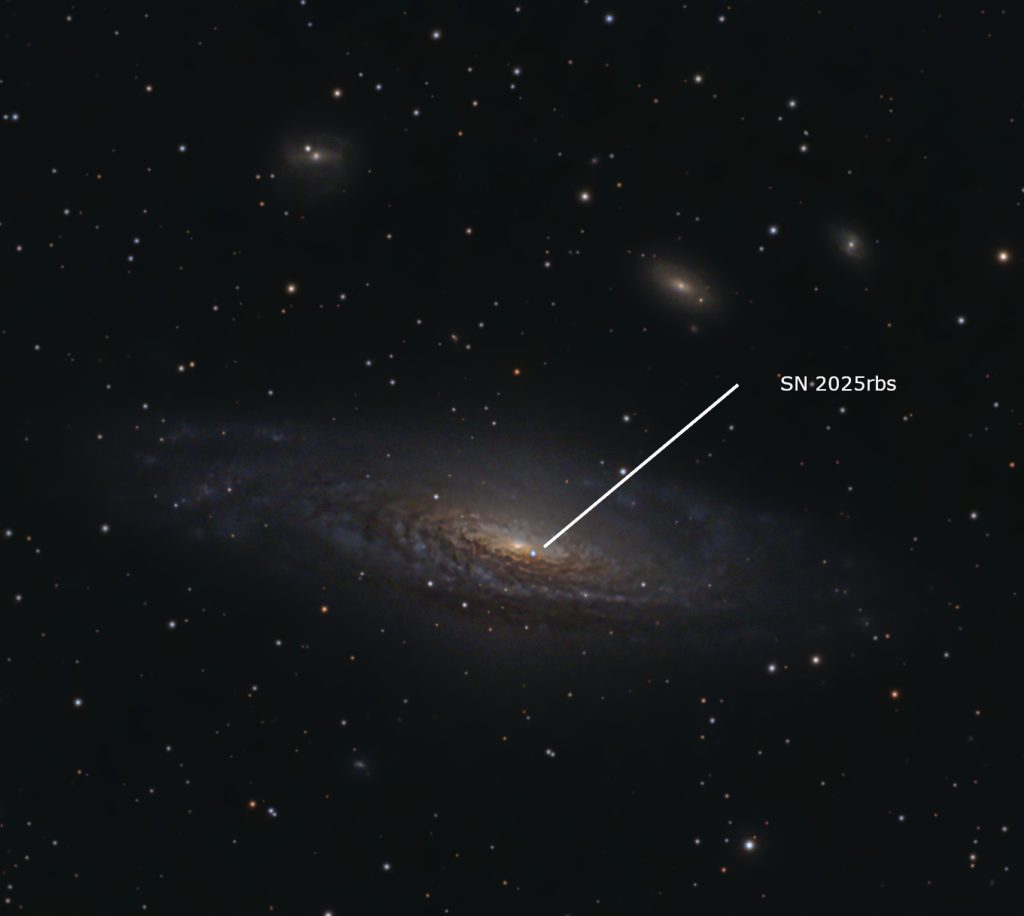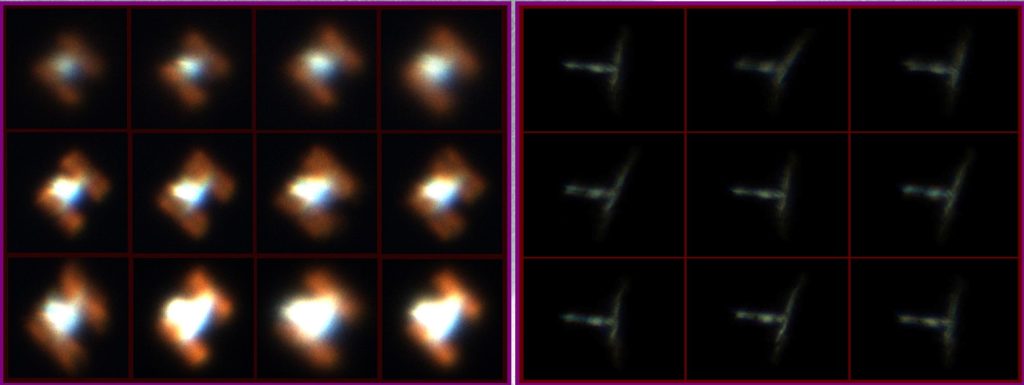SAS Astronomy Pictures of the Month [August, 2025]
Clouds of the Milky Way, a Supernova and the Chinese Space Station!
Gorgeous view of the center of the Milky Way, showing the Lagoon Nebula in all its glory, the Trifid Nebula and more! This is a 3hr and 15min exposure using an ASI294 and IDAS NBZex filter on a 6 inch Celestron Hyperstar. It is the same first light view obtained by the new Vera Rubin telescope, except that the VR telescope is 57 times the size of the C6, 1+ stop faster and 3400 times the resolution!
Trifid and Lagoon Nebulae by David Murray
Here’s a closeup of the beautiful Trifid Nebula (M20) in Sagittarius. This is a 9hr exposure using an ASI2600mc on my 12inch LR200 Classic Meade scope. Click on this link for more details.
The Trifid Nebula (M20) by Terry Riopka
This is a 4hr exposure using the same setup as before. David ran into some clouds and thinks the “squid” is not as bright as it should be… I actually like the subtlety of it in his image… most images really make it stand out (artificially so IMO). The Squid is remarkable for having been discovered very recently, in 2011, by amateur astronomer Nicolas Outters. It was originally called a planetary nebula but is now thought to be some kind of bipolar outflow from the bright blue star at its center.
The Flying Bat Nebula and Squid by David Murray
Supernova in NGC7331 discovered only two weeks ago on July 14, 2025! The galaxy is located about 40 million light years away in the constellation Pegasus. You can see the tiny bright supernova explosion right beside the core of the galaxy. I thought it was supposed to be white, but after processing in Pixinsight (which does a spectral analysis of the stars to determine appropriate colors) PI made it blue, which is actually its correct color! You can see how the galaxy normally looks by following this link.
Supernova in NGC7331 by Terry Riopka
Yet another attempt at the Chinese Space Station! This time (on the right) my focus was much better and my gain was set well. However, I couldn’t get a steady track on the station so the images are a little warped. Nevertheless, you can see the shape of the two outer modules, but the solar panels are almost completely edge on. You can click here for more details.
Tiangong, the Chinese Space Station by Terry Riopka





